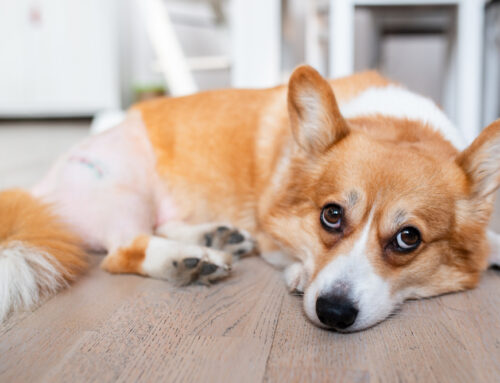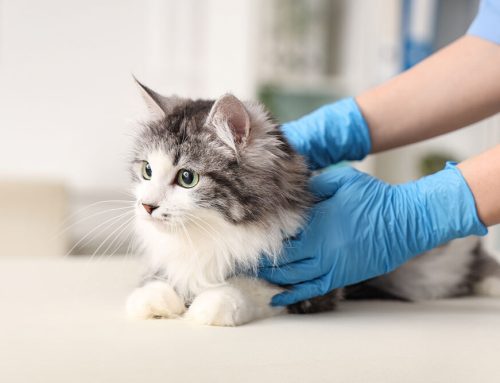Few things in life are cuter than a young, fluffy kitten who is exploring their new home, and discovering the perfect hiding and resting spots, like your laundry basket full of unfolded clothes, or between your feet while you work in your home office. Most cats will try to convince their owners to let them outside to chase the pesky bugs or birds who like to taunt them while they gaze out the window. However, keeping your cat indoors is a critical component of responsible cat ownership, because outdoor cats have an increased risk of contracting dangerous infectious diseases.
Our feline friends are naturally independent, and the bond you share is special. Your cat has their own unique personality, and determining their needs can be challenging. Wouldn’t an instruction manual that came with the cat be helpful? Fortunately, our Homestead Animal Hospital team speaks fluent “cat,” and we offer our guide on three common feline viral infections, and ways to ensure your pet is protected.
#1: Feline immunodeficiency virus in cats
Feline immunodeficiency virus (FIV) is a highly contagious cat retrovirus, which is similar to the human immunodeficiency virus (HIV) or AIDS; however, like HIV, FIV is a species-specific infection. FIV is most commonly spread through a bite wound, and outdoor, unneutered, male cats are therefore most at risk for this virus. However, any cat can become infected, and the virus can also spread through contact with an infected cat’s bodily fluids. FIV is rarely spread through sharing of food bowls or mutual grooming with an FIV-infected cat.
Diagnosis is based on a blood test, and waiting to introduce your new kitten to other cats until after they are tested is critical. Additionally, FIV-positive kittens younger than 4 months of age should be retested at 6 months of age, because a false-positive could result from the presence of maternal antibodies. An FIV-positive cat may eventually develop feline AIDS signs, which occur when the virus attacks a cat’s immune system, increasing their chances of severe illness, or secondary bacterial infections. FIV signs are variable, depending on an infected cat’s immune system, and are similar to other diseases. Bring your cat for an examination with our Homestead Animal Hospital veterinarian if they show any of the following:
- Fever
- Pale gums
- Loss of appetite or weight loss
- Lethargy and weakness
- Conjunctivitis
- Inflammation of the gums and mouth (i.e., stomatitis, or oral ulcers)
- Vomiting and diarrhea
- Dull fur coat
- Enlarged lymph nodes
Currently, no vaccination or cure exists for an FIV infection, although regular veterinary examinations, and decreasing your cat’s exposure risk by keeping them indoors, will help prevent an infection.
#2: Feline infectious peritonitis in cats
Feline infectious peritonitis (FIP) is one of the most common infectious causes of death in young cats, and is caused by certain feline enteric coronavirus (FeCV) strains. FeCV is spread by contact with an infected cat’s feces, and is not contagious to humans or other species. More than 50 percent of cats are FeCV carriers, but many never show disease signs. Some may have mild signs, such as diarrhea or upper respiratory infections, when first infected. However, approximately 10 percent of cats experience an FeCV virus mutation that attacks their white blood cells, which can be fatal. The FIP illness itself is not considered contagious, and cats who develop FIP may have a genetic predilection for the disease. Additionally, young cats, immunocompromised cats, cats who are housed in crowded catteries, and cats who are stressed are most at risk for an FIP infection.
An FIP infection diagnosis is based on a combination of clinical signs and blood testing. Advanced imaging, such as an X-ray, may be recommended if our Homestead Animal Hospital veterinarian suspects an FIP infection, because cats with FIP are at risk for developing fluid, or effusion, in their body cavities.
Currently, an FIP infection has no vaccination or cure, and most cats who have clinical signs will succumb to the disease. Signs are variable, and may include fever, lethargy, yellowing of the skin, difficulty breathing, sneezing, and a pot-bellied appearance. Bring your cat for a veterinary examination if you suspect they have an FIP infection. Although FIP has no specific treatment, supportive veterinary care can increase an infected cat’s quality of life.
#3: Feline leukemia virus in cats

Feline leukemia virus (FeLV) is a widespread, highly contagious retrovirus that causes more cat deaths than any other organism, and is a leading cause of lymphoma cancer. More than 85 percent of cats will succumb to the disease only a few years after diagnosis, which is through a blood test. Fortunately, FeLV is completely preventable in cats who have not been previously exposed, with a series of vaccinations. The American Association of Feline Practitioners recommends that most kittens receive two vaccinations, plus a booster at 12 months of age.
FeLV-positive cats are at risk for multiple organ problems, and secondary infections, because the virus will suppress their immune system. Mutual grooming or fighting is the most common way the virus is transmitted, although FeLV can also be spread through an infected cat’s bodily fluids, including urine and feces. Disease signs may not be initially present, and some cats may not be affected for several years. FeLV signs may include inflammation of the gums and mouth, lethargy, gastrointestinal problems, neurologic disorders, and respiratory problems.
Although an FeLV infection has no treatment or cure, regular checkups will ensure an FeLV-positive cat receives the required supportive care, such as fluid therapy or immunotherapy medications. Additionally, ensuring your cat is FeLV tested before introducing them to other feline family members is vital to prevent infection spread.
If you are welcoming a new feline companion into your home, or have any questions about these feline viral diseases, call our Homestead Animal Hospital office, and schedule your cat for a preventive care examination.
















Leave A Comment